With the retirement of Bernard Le Courtois, a page turns for the Brullemail stud farm and French breeding
In 2024, Bernard Le Courtois will see the fruit of his latest crosses born. To almost everyone’s surprise, the successful breeder and stallion, at the origin of the Mail affix to the plethora of champions and the discovery and promotion of several very good males, announced his retirement and the sale of his superb property, located in Orne.
Bernard has bred many wonderful horses, but his name will always be linked with the great Almé, who he rescued and brought back to France…
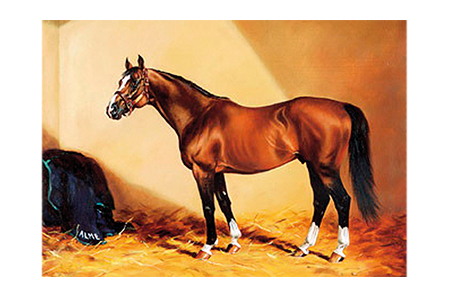
1966 – 1991, 165 cm Bay
Served France 1971-74; Zangersheide 1975-85, France 1986-1991
Breeder – Alphonse Chauvin
The greatest single influence on showjumping breeding has been the French stallion, Ibrahim (The Last Orange / Porte Bonheur) and his most influential son has been the great Almé, who was out of a mare, Girondine by the Thoroughbred, Ultimate.
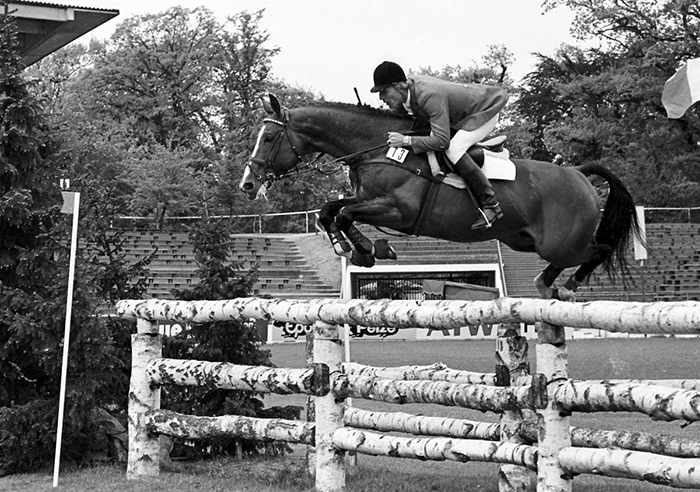
Almé in the competition arena….
Thirty years after his death, Almé continues to influence showjumping at the highest level. The most successful sire at the Tokyo Games was Chacco-Blue with five representatives, but the most successful of those representatives, Explosion W, is out of a mare by the Almé grandson, Baloubet de Rouet.
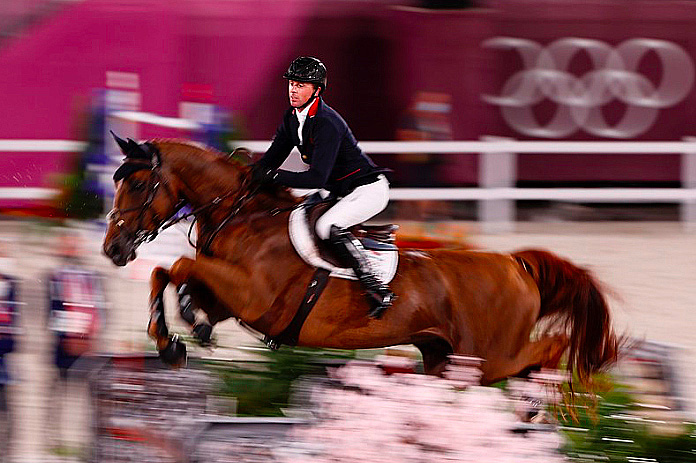
Explosion W out of a mare of Almé breeding
The stallions with the next largest group are Casall (Caretino / Lavall I) and Kashmir van Schuttershof (Nabab de Rêve / Tenor Manciais) with three each. Nabab de Rêve is a great grandson of Almé.
In the 2007-2008 edition of Monneron, Bernard le Courtois, after spending many hours on his computer, produced a list of the top 75 jumping stallions in the world, on the basis of the FEI list of the top 2515 jumping horses in international competition. This survey confirmed Almé’s pride of place, for he was responsible for 17 of the 57 leading stallions on the leaderboard. Four of these stallions were by Jalisco, the most important of which is Quidam de Revel, who headed the standings with 48 representatives. Quidam himself had two of his sons on the leader board, Nabab de Rêve and Guidam. Another Jalisco son, Papillon Rouge is ranked equal sixth in the world with 26 winners. Jalisco B, despite his death at a relatively young 19 years of age, was in 30th place on the leaderboard with 10 representatives.
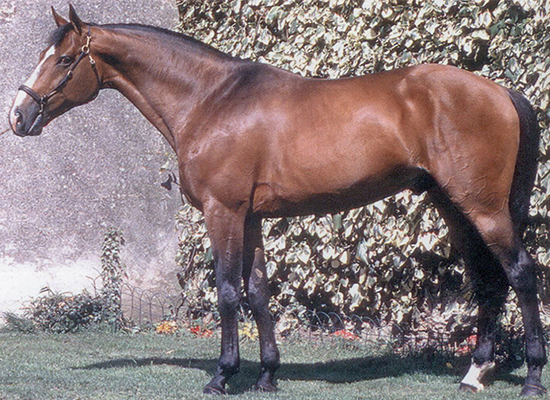
Quidam de Revel
Almé was also influential in Germany and The Netherlands. His grandson, Acord II (by Ahorn Z) was in 13th place with 16 winners. In Holland, Almé’s son, Animo ranks 19th with 12 winners. Animo’s son, Andiamo Z is ranked 64th with 5 winners.
Bernard has every reason to be proud of the Almé legacy, since he was the one who rescued the great stallion from the clutches of Belgian breeder, Léon Melchior – hence the ‘Z’ sometimes tacked – wrongly – to his name since. Melchior had nothing to do with his breeding, he was already an established sire in France when Melchior acquired Almé in 1975.
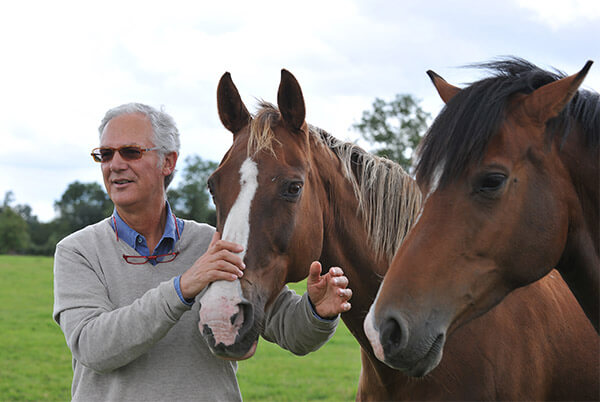
Let Bernard tell the tale, since he is not only a leading breeder of jumping horses, but he is also an accomplished writer…
“The French breeders and riders became aware of the enormous loss represented by Almé’s exportation, but few breeders were prepared to go abroad to have their mares covered. However some made the effort in 1991 and thanks to them we have several five and six year olds in competition. In the meantime Almé had been operated on for an inguinal hernia and in 1984 became mon-orchid. The Dutch then sold him and he returned to Belgium.”
“But what, I hear you say, were the French doing? What were they waiting for to bring their stallion home? Particularly when they had several opportunities to do so.”
“An offer had been made by the UNIC on behalf of the National Stud Farms, I remember the offer being F350,000. A ridiculous sum (double the price of a 3 year old at the St Lô Stallion sale) for the best stallion in the World, even if he was 18 years old and mon-orchid.”
“At the time I was the Chief Editor of the magazine L’Eperon. I had heard of this offer and of Almé’s return to Zangershiede, and decided to go there myself to see this dream stallion at last, having been too young to have seen him in France.”
“So I went to Belgium, between Liege and Aix La Chapelle, and realised that despite his age and far from calm life, Almé was still an admirable horse. I also learnt that two offers had been made for him, not from France, but by Americans and Venezuelans. On one side there was an offer of big shiny dollars and on the other, thousands of acres of Pampas.”
“What could I, a modest stud farmer, a passionate but poor breeder, do faced with such superpowers? I knew no rich patron as fanatic about breeding as myself, and no bank would have lent me enough money to repatriate Almé. But the idea became a target and then an obsession.”
“A few months beforehand, on my return from the Olympic Games at Los Angeles, I had managed to retrieve a 17-year-old stallion I liked a lot, the Thoroughbred, Laudanum. He had been forgotten and sent to the south west of France and had only covered nine mares in all in 1984. To acquire him I had applied a principle common to the racing world, ie. sale to Shareholders.”
“Laudanum’s syndicate had succeeded and the following year he had covered 63 mares. Pleased with my success I decided to use the same principle to save our genetic heritage and bring back Almé to French Breeders. Negotiations were long and difficult. I often grew depressed about the attitude of the people I was dealing with, who did not keep their word and refused to sign any contract.”
“The 1985 breeding season was wasted for us, Almé stayed in Zangersheide.”
“The Americans were willing to pay a lot of money for Almé. It should be remembered that his son, Galoubet, had been bought by syndicate in the USA one year before, for the sum of $2,000,000. At a time when the dollar was worth 10 Francs, this represented 20 million Francs. They could afford to be stubborn. However Almé’s weaknesses were to my advantage. I won the first round of the fight. Almé could not go to the USA because he showed positive on a biabose test. Unwilling to give up completely the Americans decided to leave Almé in Belgium and import his frozen sperm. Second round won, Almé’s sperm could not be frozen!”
“The Americans gave up the fight leaving the Venezuelans and their acres of Pampas. Here dialogue won the day. To export a stallion like Almé to South America was nothing less than a burial. I was left with three points to argue with: French breeding, international commerce and the financial structure that was to repatriate Almé.”
“The person with whom I was negotiating accepted the principle but still would not sign the contract allowing Almé’s return. Negotiations had been going on for nine months. I was furious and about to abandon the idea when, whilst at the Fontainebleau European Championships in 1985, I issued a deadline. After several heated discussions I left Fontainebleau with my contract signed.”
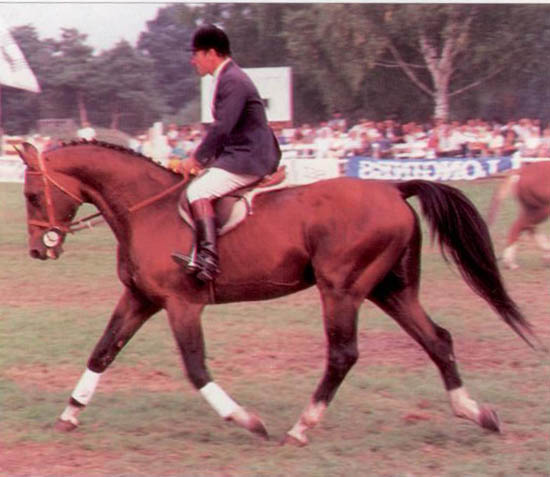
Almé
Even with Almé safely back on French soil, Bernard had a battle to establish the elderly stallion:
“Almé was to return to France. His official comeback was to be a month later at the Dinard European Championship. My incredible gamble had been won, I announced in the magazine Almé’s amazing and unhoped for comeback.”
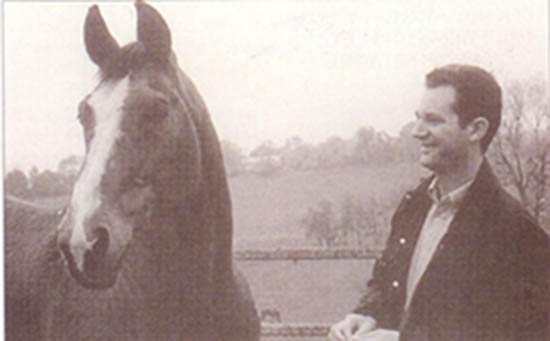
Almé and Bernard
“Almé’s comeback must have disturbed quite a few people. I heard so much rubbish, either directly or repeated to me, from people who are meant to be authorities in the horse world and who I believed to be intelligent or at least reasonable.”
“According to them Almé was little more than a rocking horse, and sterile to boot! Obviously, as a tenderfoot, I was made out to be a fool, if not worse.”
“However Almé’s presentation put things in place and silenced more than a few. Almé, then 19 years old, was on dazzling form. I’ll always remember his presentation and the admiring gaze of hundreds of people passing the message, ‘It’s Almé’.”
“Accompanied by Handel’s magic Saraband, Almé made his comeback on the grounds at Dinard in front of thousands of spectators entranced by his beauty and the charisma of the horse whose reputation was at its peak.”
“I admit that the emotion brought tears to my eyes. A moment of great satisfaction and pleasure: pleasure in the beauty of the scene and the satisfaction in the work accomplished. False modesty aside I was also very proud.”
“The follow up was just as exciting. Shares in Almé were a great success. There were 70 – 80 shares for sale at F20,000 (today this seems cheap but in six years horse prices have greatly increased). Within a few days all the shares were sold and the money raised to buy Almé.”
“In the space of a few weeks I received almost 400 requests to buy shares. Real Almé fans contacted me unfortunately too late. Every day I had to return cheques arriving too late. Some were even signed blank accompanied by a note to say: ‘I’ve heard that Almé is for sale to a syndicate, I don’t know the conditions but please keep me one or two shares and fill in the enclosed cheque’.”
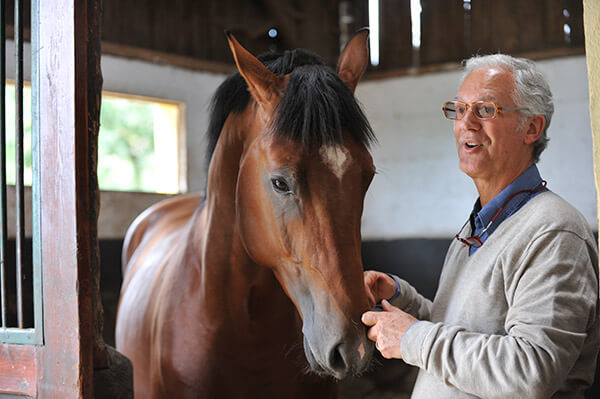
“Incredible, this enthusiasm and confidence were a great comfort to me. It was without doubt this owners association which made me decide to make the move to Normandy and set up as a stallion breeder.”
“During 1986 – 87 Almé’s fresh sperm was used for artificial insemination, 100 mares per season. Mares came from all over France as well as from Belgium, Holland, Great Britain, Switzerland and Italy. In 1988-89 I limited him to 80 mares and in 1990 to 60 because of his age and state of health. Out of the 420 mares covered during five years, with an average fertility rate of 78%, many products were exported and roughly 20% of the mares covered gave birth abroad (foreign mares or mares in foal exported) added to these are the dozens of Almé foals of all ages exported to Italy, Belgium and Sweden over the past five years…”
“It should also be noted that Almé foals are not precocious, needing to be patiently conserved and not shaken around at the age of four. Observe their elders, Galoubet, I Love You or Jalisco who were hardly out at the age of four. Only at five years old were they beginning to be noticed. The future will smile at those who are patient with their mounts. However, despite the numerous exports and mares kept for breeding at three years (some of whom will appear the late five year olds next year) there were 12 Almé products in the 1991 Fontainebleau Final.”
“Almé, once named by a journalist the “Golden Goose” was retired in August 1990.”
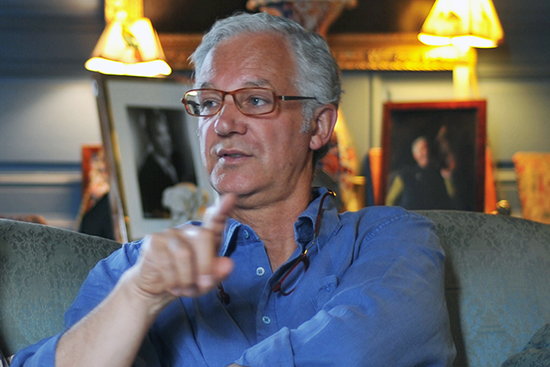
“It gave me the great satisfaction to see him finish his days with me at the Brullemail stud farm. From my office, where I sit to tell you this story, I used to see his head over his box door every day, so expressive despite his age. I could hear his high pitched neigh, so unusual, like a dolphin, as the mares crossed the courtyard or came in from pasture.”
Is Almé still relevant? Just a month or so ago, I was in s’Hertogenbosch for the 2023 KWPN stallion show. A new face in the sire’s lineup this year was the seven-year-old 1.40m jumper, La Costa. Out of his first crop, La Costa ES presented five at the pre-selection, with four getting the nod for the second round. All four are owned by La Costa’s breeder Egbert Schep who had a total of nine colts qualified for den Bosch.
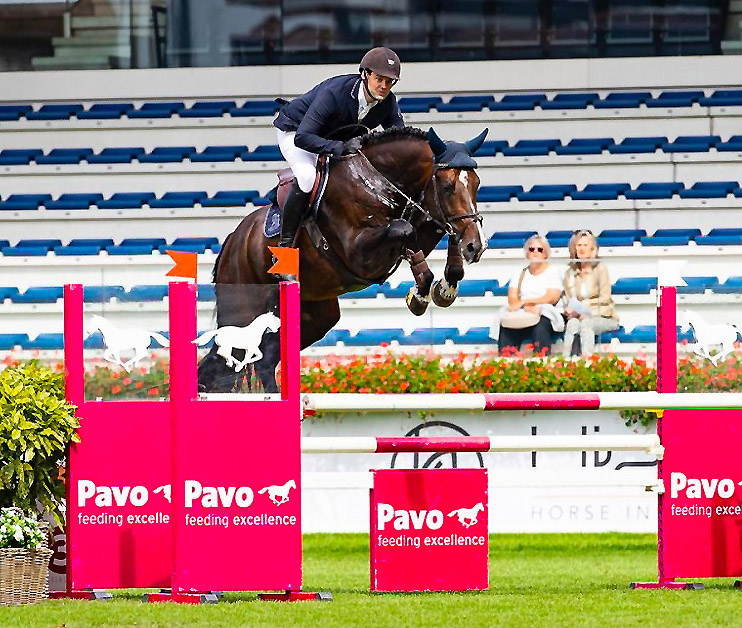
La Costa
And sure enough, there’s Almé blood flowing in the new star’s veins. La Costa is by Mosito van het Hellehof, by the Diamant de Sémilly son, Elvis ter Putte who is out of Ukas ter Putte by Darco out of a Quidam de Revel mare. Mosito is out of a Nabab de Rêve mare, who is out of a mare by Gratanus (Grannus / Pilot).
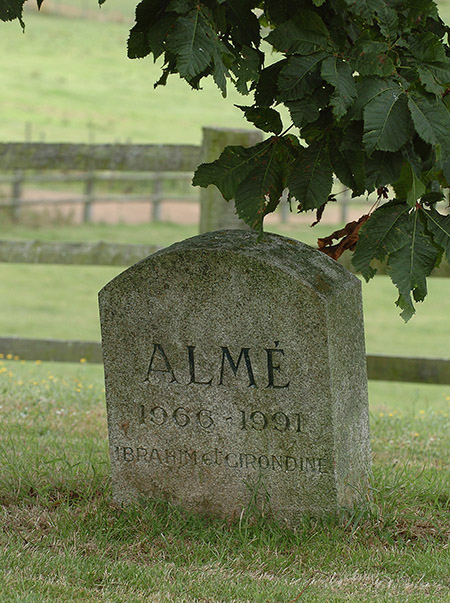
The Sporthorse breeding world has many reasons to thank Bernard le Courtois, not least is his feat of saving the great stallion and bringing him back to France…
This is an interview I conducted with Bernard back in 2014…
For a long time you were a critic of the French breeding establishment – through your campaign against the use of the BLUP, through your campaign to open the Selle Français studbook to outside influences, but here you are president of the Selle Français association…
“Not for long, I will stop being the president in May next year. I am very busy with my stud farm, I have to work, and I have spent too much time working for the Selle Français over the past two years. I have to go back to work.”
But there has been a big change – a critic in the past to become a president…
“Talking about the BLUP, we had that in the Selle Français selection only when the National Stud was the manager of the studbook. After that, when Philippe Curti was the president before 2007, we still had the BLUP in the breeding program but when Yves Chauvin, who was the president from 2007 to 2012, took over, we stopped using the BLUP in the breeding program. And this year we have asked the National Stud, to stop publishing the BLUP, because we don’t want to use it, and we don’t want it published. We asked the National Stud to give the information to the Selle Français studbook, and we can decide what to do with it. It could be interesting for the overall population of the horses but not for the horses individually. We consider the publication of individual BLUP figures is too dangerous.”
Nankin
You have long argued for the introduction of outside blood, that has certainly happened now…
“When the National Stud obliged the breeders to use the BLUP for the selection of the stallions and the broodmares, we had a problem – the studbook was closed and the new genes came only from the Anglo-Arab and the Thoroughbred stallions, and sometimes Thoroughbred mares and Trotter mares. But because of the BLUP we used only four sire lines, Ibrahim and Almé, the most popular, then the line of Nankin / Uriel, and the third was Grand Veneur, then a few from the Thoroughbred Laudanum.
Grand Veneur
Just three Selle Français sire lines, that is very dangerous. The BLUP pushed all the breeders to use the same stallions with a very high BLUP – at that time, if a colt foal was born with a BLUP of more than 20 points, the rules said that it will be approved automatically as a stallion because of the BLUP. That was really stupid – it can have very bad legs, a bad back, but if it had more than 20 points, it was approved automatically. This was very dangerous. For ten years the national stud said, we stop using the horse experts to approve the stallions and we used only the BLUP, we stopped the conformation test for ten years, and the quality of the horses conformation went down… and all the other studbooks laughed at us!”
“When Yves Chauvin arrived in 2007 as president, we decided to stop using the BLUP as the criteria for the selection of the horses. With only three sire lines, we needed new genes – the breeders were not even using the Thoroughbred blood because the BLUP for the Thoroughbred is zero, because they race they do not jump. We had no new genes to cross with the Selle Français mares, it was time to open the studbook to stallions from abroad. We had started to open the studbook just a little in the 90s.”
Ibrahim
“My opinion at the time was to have a connection with the Holsteiner Studbook because the pedigrees of the Holsteiner are very close because they used Selle Français, like Cor de la Bryère, Almé, Quidam, and they have a selection mostly for jumping horses, and I thought it made sense for us to combine with the Holsteiners. But at the time, our studbook had different ideas, and the three first stallions approved were Abdullah, Trakehner, Donnerhall, an Oldenburger for dressage, and Voltaire, a son of the Selle Français, Furioso II and no Holsteiner.”
“Then around 1995 the studbook to all the stallions was approved in Europe, if it was in a studbook recognized by the WBFSH, it was automatically approved in France. And we saw many many young stallions, three years old, approved at the licensing, but without the performance test, coming to France to breed a lot. We thought that was very dangerous because it was not the job of the Selle Français to test the young stallions from abroad. We have our own stallions to test. So in 2008 we decided that the young stallions coming to France to breed had to take part in our championships – we wanted to see them jump in the Cycle Classique, and approve the stallions only after they had competed in Fontainebleau or Pompidou in the Finals. We did that for some years – with a Selle Français judge at the finals who also looked at the conformation, and the style of the jump.”
“This year we have made another change. We want to close the studbook and stop approving the 4, 5 and 6 year old stallions from abroad. In Fontainebleau and Pompidou this year, we approved only the Selle Français and some Anglo-Arab. And the championship show was only open to Selle Français and Anglo-Arabs, not the imported horses. Now we only approve foreign stallions after they are seven years old. Now the championship show is reserved for the horses from our selection program – horses from Zangersheide or Hanover, are not in our selection program, and therefore these horses do not come to our championship show, just horses from our selection program.”
“If a stallion comes from abroad, he can breed in France, because now Europe is very open, but not in the Selle Français studbook. There are two possibilities – the first is to produce foals called ‘OC’, they don’t go into the studbook, it is a register and if the stallion is approved later, we can get back the OC foals and move them into the studbook, on the basis of the stallion’s results in showjumping. The other possibility is to register in another studbook, like Zangersheide. But if they register the foals with Zangersheide, they cannot come back to our studbook. The stallion can become approved in our studbook on the basis of his jumping, and the foals registered OC can come back to the studbook on the basis of their jumping.”
How would that affect a stallion like Cumano?
“He was approved at the time, when he was in France twelve years ago for one season. That season he bred about 60 mares for about 40 foals with amazing results, I think 25 jumped Grand Prix – amazing. The problem of Cumano was that he was a huge stallion, and the two French riders who rode him as a seven year old, had not good results in competition. They didn’t like the stallion because he was too heavy for the French riders, especially these two riders who ride more with instinct than with work and dressage. Then when the stallion moved back to Belgium with Jos Lansink, he had fantastic results because Jos Lansink is a rider who will ‘dress’ a horse, and work strongly with the stallion – and I think Cumano needs that because he is so huge. He was not the type of horse for the French riders, but he crossed very well with the French mares.”
“I think he was a very good stallion because if you look at the pedigrees of the French mares who bred these Grand Prix horses of Cumano, usually these mares were not exceptional, he didn’t breed to the best mares in France. He bred correct mares but not the best ones, and he had very good results. His problem now is his fertility, the fertility is very bad…”
Was he the best foreign stallion to come into the Selle Français studbook?
“The stallion who has the best result at the moment is Kannan, he is second in the world rankings as a sire. In the opinion of the Selle Français studbook, we have a problem, we have a few stallions who breed to too many mares. Kannan covers around 600 mares a year in France, and maybe the same abroad – more than 1000 mares a year world wide, it’s incredible, but really too much. He is a good stallion, he produces easy horses to ride, good competitors, most of them in two star, three star international shows, some of them in five star, like Nino de Buissonnets, it’s a really good stallion.”
Nino des Buissonnets and Steve Guerdat
“We have some problems with other stallions, not so successful with bad temperaments, and because of the promotion of these stallions, they are breeding more than 400, 500 mares a year, and the studbook would like to stop that. We consider these stallions could be interesting but not breeding so many mares, that is dangerous, some of them have bad temperament, bad technique, not very good conformation, but the promotion is so good that the breeders use these stallions.”
“The board of the studbook considered the question of making a quota of 200 mares, like we did in the past, because we consider these stallions – who are not at the moment the best in the world – are too dangerous to use in these numbers. But we have a problem, if we say, next year we will have a quota of 200 mares. The stallion owners say, okay for the Selle Français quota of 200 mares, the price will be double, or three times more expensive.”
“But if they have a higher price for the Selle Français mares, then the price were the mares outside the quota will be much lower, and with the mentality of the new breeders, maybe they don’t care to have a Selle Français. They would prefer to pay a cheaper fee and register the foal outside the studbook – we would be giving to other studbooks like AEA, or Oldenburg or Zangersheide, maybe 2000 foals every year. Every breeding association in the world has problems at the moment with the number of mares being bred, and it is not possible to give a big present like that to the other breed associations.”
Casall Ask, the best stallion in Holstein at the moment
“So we decided not to have a quota, but we try to explain to the breeders that it is stupid to use stallions that are not really proven, just well promoted, but we have no authority. For example, two weeks ago, at the Selle Français show, we had the staff of the Holstein Verband there, and over lunch we were talking about the policies with the stallions and the breeders. I put the question, what do you do with Casall, the best stallion in Holstein at the moment, and they said, we have a quota of 350 mares for Casall, but he is owned by the Holsteiner Verband and they can decide what they want to do. But if the best stallion in Holstein is a private stallion, then it is impossible for them to do anything, if the stallion owner sells 600 services a year, they have no power. In France, the Selle Français studbook is not the owner of any stallion. We can’t decide for the breeder, if 500 breeders want to use the same stallion, we can’t do anything.”
You can’t remove the approval from the stallion to breed on the basis of the progeny?
“When you have a stallion that breeds, 200, 300, 400 mares every year, you have automatically several good horses because they breed to some very good mares, and the people say, look at my stallion, he has good results, he has four or five horses in the world ranking – yes, but he bred so many mares that this is normal, he should have not five, but 50 or 100. We have the same situation at the championships in Fontainebleau, everyone says, the best stallion in France is Kannan, or Conturo, but they breed so many mares, there are so many of their progeny on the jumping circuit, so it is no surprise that so many qualify for the championships.”
“The other problem with the few stallions breeding so many mares is this: at the moment we have around 8000 mares breeding, if you have 2000 bred to two or three stallions, that is 20-25%. During this time, the breeders never test the young stallions, and never use the stallions who breed only 20 to 40 mares. Some of them are of equal quality to the stallions who are breeding 500 mares. It is only that some stallions are more fashionable, but they are not better than the other ones. Our problem is particularly that, we would like to test more stallions, because the danger is that we can lose some good stallions that are never given the chance to prove just how good they are. It is very important to test the young stallions, because that is the future – the good stallions will be the young ones that we are selecting now. That is the problem of the Selle Français at the moment.”
In France is it the same as Germany and Holland, less mares bred, the horse industry is not going well?
“I think from 2008 everywhere in Europe the breeding is down. The timing of the decline is different in every country. I don’t know why. The first country to experience this loss of breeding mares, was Sweden in 2008 – Flyinge Stud closed in 2009 because they lost 50% of the stud fees in one year and they sold all the stallions. In Ireland, in Germany, in Belgium, the number of mares bred are down. In France, from 2008, we lost around 5% every year, in five years that is 25%, but the worst was in 2013, when we lost 20% of the stud fees. I think it is more because of the new government, the new taxes, and the French people decided not to breed this year. I hope next year they will start to breed again.”
“Some people say it is a good thing, that in the past in Europe, too many horses were born, and the loss of 50% of the mares, means that the market will go up in a few years when demand exceeds supply. I don’t know, at home on my farm, I continue to breed 30 mares, hoping that the market will be better in a couple of years.”
Kannan (photo Groupe France Elevage)
“It is a new private market now. The National Studs will stop being stallion owners next year, and we will have only private stallions. People can buy a stallion anywhere and import it. If they want the stallion approved by the Selle Français studbook, they have to show him to the committee, and the decision will be determined by his own performance and the performance of the progeny in international classes, and if the horse has good enough results, then we approve the stallion.
What new young stallions are looking good in France?
“Mine, first. (Bernard is chuckling) It is very difficult because there are only very few young stallions who breed enough mares to see the foals in the foal show. For example, at the Selle Français show we saw some foals by new young stallions but very few. When you have a stallion that breeds 500 mares a year, then at the foal show, you see only the foals of this stallion. You can’t see the other ones. Sometimes the winner of the stallion show can breed 50 or 100 mares but only one season, and if the stallion doesn’t have a good result at four and five years old, then the breeders stop using him and start again when the stallion jumps very well at seven or eight – or when the first four and five year old progeny arrive on the market and jump very well.”
“The mentality of the Selle Français breedeers is not the same as the mentality in the Netherlands or Germany. For example, if you go to Elmshorn, or s’Hertogenbosch for the licensings, you can see 5000 people watching the young stallions. In France it is impossible. You have 300 people to see the stallion show. The breeders are not interested in the new stallions, they prefer to use the stallions that they can see on the TV on Sunday night, not the young ones.”
“Sometimes in France when you have a very good young stallion you have to give the service to the breeder for free. The policy of the breeders like Haras Couvains, or Mr Valois, or myself, is that we say okay I have a new stallion, he has a fantastic pedigree, top conformation, he jumped very well at the stallion show, and he is approved by the Selle Français studbook, and if you buy a stud fee of one of the older stallions, then you can have a free breeding to the younger one. That is the only way to test the young ones.”
“The breeders never think about what we have to invest to produce a new stallion: genetically, to keep the mares, to buy the semen, to select the foal, to prepare the young horse for the stallion show, it costs a lot. Then we have to train the stallion, to jump him at four and five, and yet, to get some mares for him, you have to give him away free. That is incredible…”

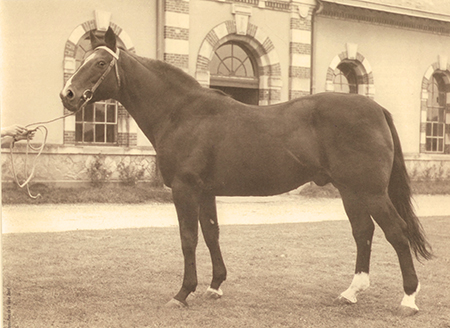
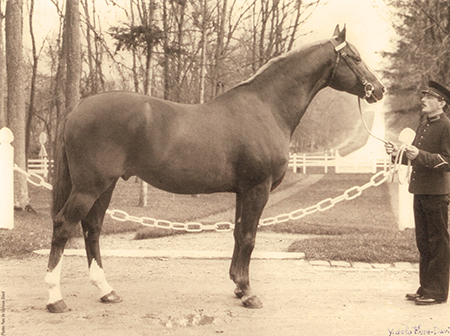
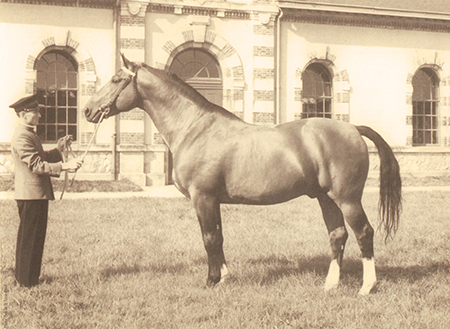
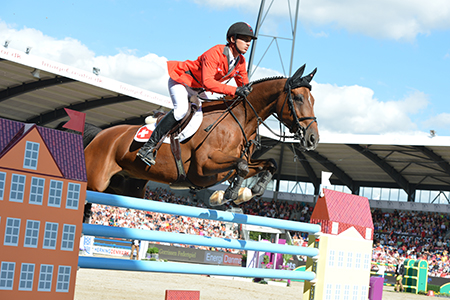
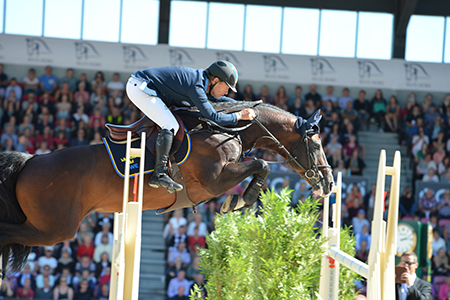
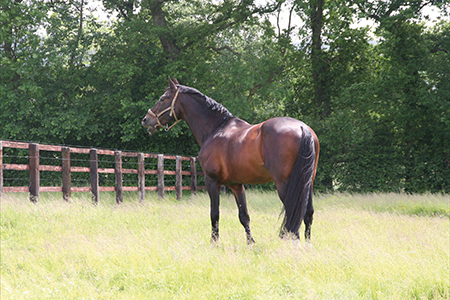
Belíssimos e lindos cavalos!!!